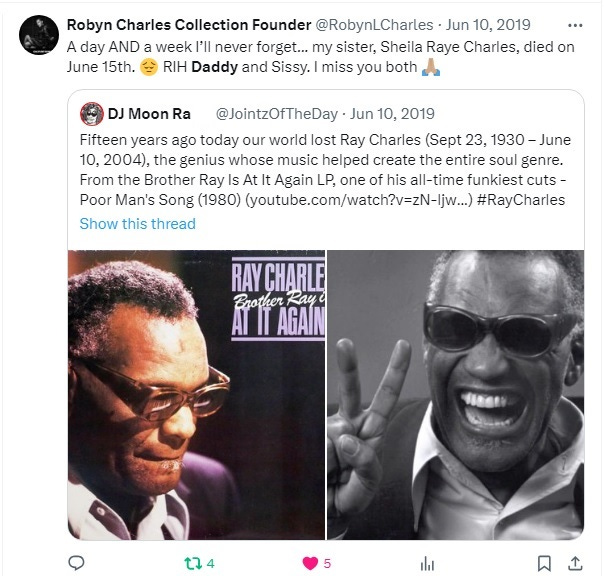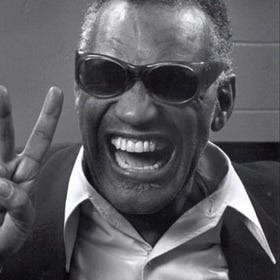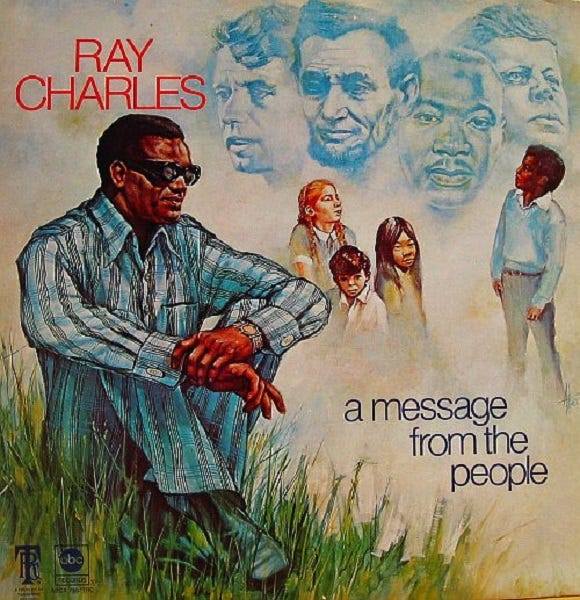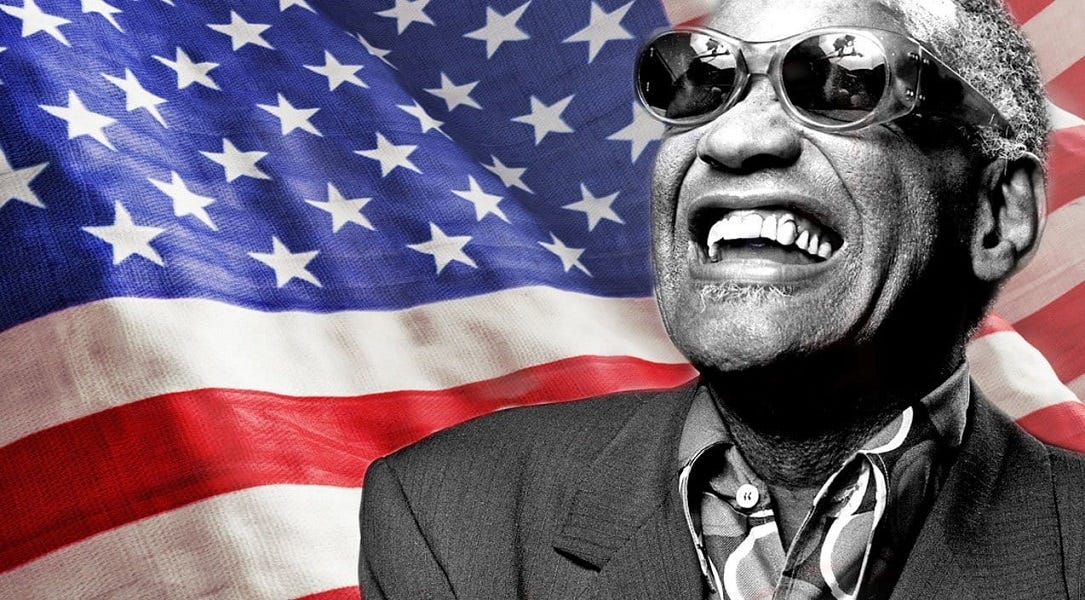Ray Charles (September 23, 1930 – June 10, 2004) – Heaven Help Us All (1972)
For his 1972 LP A Message from the People, Charles covered this anthem for a better world, originally written by Ron Miller for Stevie Wonder.
View most updated version of this post on Substack
Search our full archives
Twenty years ago our world lost the genius Ray Charles who helped give birth to soul music.
See our earlier post on Charles for more on his storied life and cultural influence.
Ray Charles (September 23, 1930 – June 10, 2004) – Questions (1980)
Ray Charles' music reached across lines to touch us all. He pioneered the mixing of musical genres in the 1950s, creating a gumbo of gospel and rhythm & blues that nearly singlehandedly spawned the sound eventually known as soul music.
Charles expressed his commitment to freedom, justice and equality through his civil rights work and his many message songs. In 1972 he released one of the most explicitly socially conscious LP’s of his career, A Message from the People.
Produced by Charles and co-arranged by Quincy Jones, it was one of his final albums on ABC Records, the label he had recorded for since leaving Atlantic at the start of the sixties. Its all-star lineup included Freddie Hubbard on trumpet, Hubert Laws on reeds, Eric Gale on guitar, Chuck Rainey on electric bass, Grady Tate on drums, and backing vocals by the Raelettes.
The LP featured powerful covers of protest songs including “Seems Like I Gotta Do Wrong,” originally a #8 R&B hit for the Whispers in 1970, and the anthem for a better world “Heaven Help Us All,” written by Motown songwriter Ron Miller for Stevie Wonder.
Charles performing live in 1972
There were also some originals on the album, like the song “Hey Mister,” a cry for the federal government to stop turning a blind eye to its poorest citizens. It was written by the unknown songwriter Betty Lapcevic, the only song she was ever credited with having penned. Released as a single, its stirring lyrics were entered into the Congressional Record after it was played later that year at a Joint Senate Hearing before the Special Subcommittee on Human Resources and the Subcommittee on Aging of the Committee on Labor and Public Welfare.
Its B-side was another original from the LP, the stellar unity anthem “There'll Be No Peace Without All Men As One.” Sadye Shepard wrote it, who would go on to write several songs for Charles’ next few albums. The single peaked at #47 R&B, and the LP reached #52 on the Billboard 200.
In May, 1973, Charles and his longtime manager Joe Adams were photographed as they donated the artwork from the album’s cover to a museum, an original painting commissioned by artist Al Willis.
Rest in Power, Ray Charles.
Further info:
“Ray Charles: A Message From The People," review by Alyn Shipton, JazzWise.
“Ray Charles, Who Reshaped American Music, Dies at 73,” The New York Times, obituary, June 10, 2004.
“Brother Ray's Message to the People,” by Dr. Dwandalyn Reece, Smithsonian Music, February, 2016.
#soul #funk #RayCharles











Some artists navigate an interstellar, influential, and creative plane, that is so far beyond the physical realm of human comprehension that they transcend all other beings. Ray Charles is one of those very special artists where words fail to express the enormous magnitude they have had on music and so many people's lives. ❤️